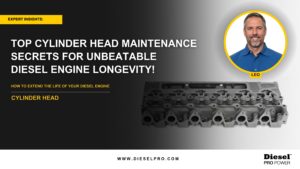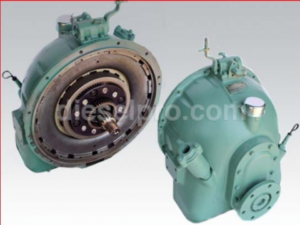Blog
FEATURED POST
October 23, 2024
Why Choose Diesel Pro Power for Marine Diesel Engine Parts?
Faster - Easier - Better (We Keep Your Engines Running)
Extensive Selection & Easy To Use Platform
Fast, Worldwide Shipping:
Expert Support:
Durable, High-Quality Parts:
Final Thoughts
Read More
July 22, 2025
Signs You Need a Cylinder Head Overhaul vs. a Full Replacement
Understanding the Role of the Cylinder Head
Why the Condition of Your Cylinder Head Matters
Diagnosing Common Symptoms
Detailed Inspections for Marine Engines
Conducting a Pressure Test
Evaluating Damage Severity
Cost-Conscious Approaches to Repairs
Fleet Management: Planning Overhauls
Individual Engine Owners: Assessing Life Expectancy
Conclusion
Read More
July 22, 2025
Cost of Downtime: How Fast Shipping Saves You Money
Understanding the Financial Impact of Downtime
Quantifying Losses from Stalled Equipment
Emphasizing 24-Hour Shipment
Benefits of Rapid Replacement

Keeping Vessels at Sea and Profits on Track
Positive Impact on Industrial and Trucking Operations
The Broader Benefits of Timely Part Availability
Minimizing Operational Bottlenecks

Extending Equipment Lifespan

Enhancing Cost Management
Read More
July 22, 2025
Refurbished vs. New Cylinder Heads: Making an Informed Choice
Understanding Cylinder Heads in Diesel Engines
Short-Term vs. Long-Term Costs
Reliability in Marine Applications
Cost-Effectiveness Over Time for Businesses
Individual Considerations: Balancing Performance and Savings
How to Make an Informed Choice
Conclusion: A Balanced Approach
Read More
July 22, 2025
Must-Know Cylinder Head Maintenance Hacks You Can't Afford to Miss!
The Critical Role of the Cylinder Head
The Importance of Regular Inspections
Cleaning: The Often Ignored Step

Know When to Replace
Planning for the Long Haul

The Essential Checklist for Diesel Engine Owners
Conclusion
Read More
July 21, 2025
Introduction
The Role of Connecting Rod Bearings in Marine Diesel Engines
How Marine Operation Accelerates Bearing Stress
Common Causes of Bearing Failure in Marine Diesel Engines
Inadequate Lubrication
Contaminated Oil
Improper Engine Rebuilds or Assembly Errors
Hydrodynamic Oil Film Collapse
Debris and Foreign Material
Warning Signs of Bearing Failure in Marine Engines
Low or Fluctuating Oil Pressure
Metallic Knocking or Thudding Sound
Oil Analysis Reveals Elevated Metal Particles
Overheating and Loss of Power
Case Studies: Real-World Failures in Key Marine Diesel Platforms
Detroit Diesel 6-71 and 8V92 Marine Engines
Cummins 6CTA 8.3 and KTA19/KTA38
Caterpillar 3406 and 3500 Marine Engines
Preventing Connecting Rod Bearing Failures
Follow OEM or Aftermarket Specifications Precisely
Maintain Oil Quality and Change Intervals
Install Oil Pressure and Temperature Alarms
Use a Proper Break-In Procedure
The Aftermath: What Happens When Bearings Fail?
Spun Bearings
Thrust Bearing Failure
Crankshaft Damage
Expert Tips for Marine Diesel Technicians
Final Thoughts
Read More

July 17, 2025
Introduction
What’s Included in a Standard Rebuild Kit For Allison M & MH Marine Transmissions
Clutch-Related Components
Gaskets and Seals
Bearings and Bushings
Hardware
Advantages of Aftermarket Parts Over OEM
Common Wear and Replacement Parts
Clutch Components
Bearings
Seals and Rings
Thrust Washers
Gaskets and Fasteners
Recommended Fluids and Filter Replacements
Transmission Models Supported
M Series
MH Series
How to Identify the Correct Rebuild Kit
Additional Parts Available at Diesel Pro Power
FAQ – Frequently Asked Questions
Additional Resources for Allison M & MH Marine Transmissions
Read More




 Free US Calls: 1-888-433-4735
Free US Calls: 1-888-433-4735 International: 305-545-5588
International: 305-545-5588









